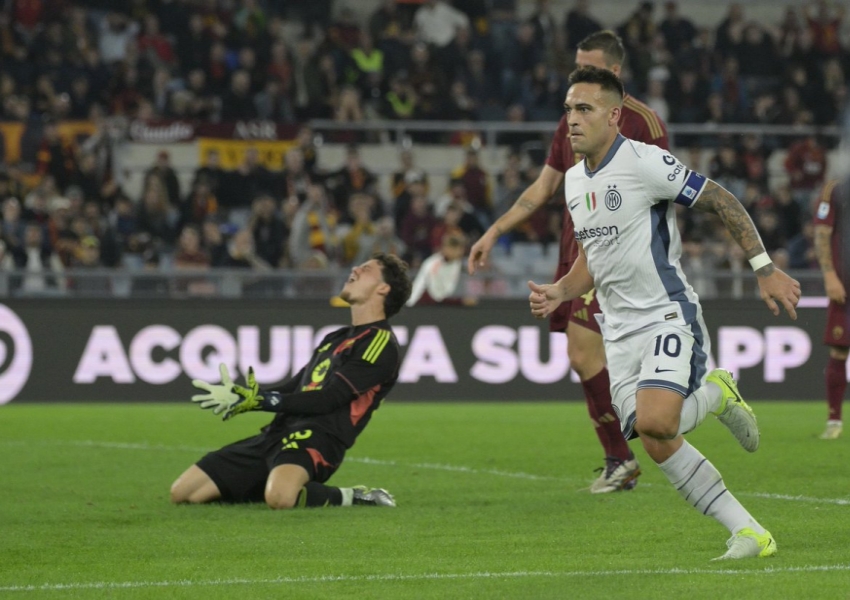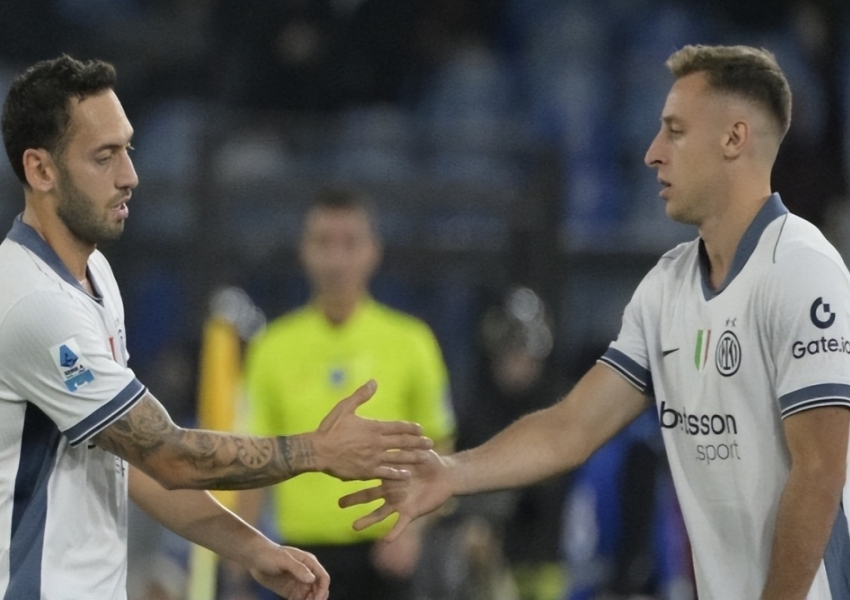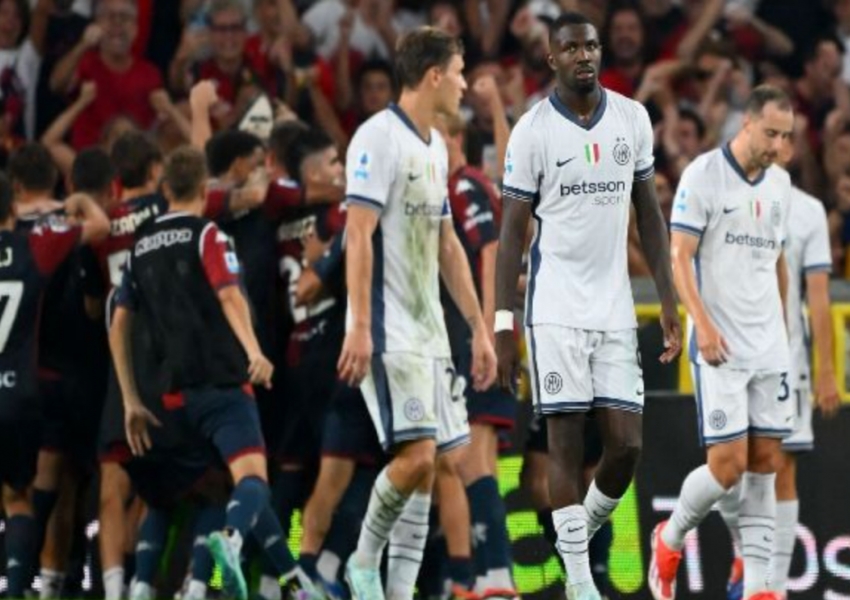Inter Milan’s Mastery Over the Last 35 Matches: A Defensive Counterattack Philosophy, Ineffective Only Against Manchester City and Bayern
In the past two and a half years, Inter Milan has quietly refined a tactical philosophy that has brought them immense success, especially in big games. While many of Europe’s elite clubs prioritize possession-based play, Inter has gone the opposite direction, embracing a defensive counterattack system where lower possession often yields better results. In their last 35 matches where Inter held less than 50% possession, they boast an impressive record of 23 wins, 8 draws, and only 3 losses. However, those three defeats came at the hands of Manchester City and Bayern Munich, clubs with superior resources and personnel. The blueprint Inter has followed reveals a team that thrives when playing without the ball, unlocking a modern interpretation of a classic Italian football philosophy.

Injuries and External Factors in Roma Victory
Inter's recent 1-0 win over AS Roma is a perfect case study of how their system works. Even though commentators and Roma’s coaching staff criticized Inter’s performance, citing higher possession stats in favor of Roma, the final scoreline reflected Inter’s mastery of their approach. Injuries to two critical players early on—both a central defender and a defensive midfielder—could have crippled most teams. However, Inter adapted, showing resilience, and still managed to shut Roma out.

The Italian football world, including respected figures like Beppe Bergomi and Paolo Di Canio, acknowledged that Inter didn’t perform at their best. But the team’s six or seven out of ten performance was still enough to claim victory. Injuries and a congested fixture schedule were key factors that constrained their play, prompting even CEO Giuseppe Marotta to publicly express his concern about the overwhelming number of games players are required to endure. Marotta’s plea for reducing fixture congestion reflected the broader issue that clubs with deep European runs, like Inter, must contend with.

Another challenge came in the form of refereeing decisions, which left Inter feeling unfairly treated. Television commentators were vocal in their criticism of the officiating, with some suggesting that Inter should have had a numerical advantage earlier in the match. Lazio’s Alessio Romagnoli was sent off for a similar foul, but Inter saw no such reprieve. Despite this adversity, Inter still managed to grind out a result, revealing the steeliness and tactical maturity that has come to define Simone Inzaghi’s squad.
Inter's Unique Relationship With Possession
Roma’s frustration post-match was largely centered around the fact that they dominated possession. However, this is a statistic that often misleads teams facing Inter. In modern football, possession is frequently viewed as the hallmark of dominance, but for Inter, it has often proven irrelevant. The win over Roma marked just the second game this season where Inter held less than 50% of the ball. In the other match where Inter conceded the majority of possession, they earned a hard-fought draw at the Etihad Stadium against Manchester City, widely regarded as their best performance of the season.
The truth is, Inter thrives when they don’t control the ball. Over the past two and a half seasons, the team has played 35 matches where they held less than 50% possession, winning 23 of those games. They have been most effective against some of Italy’s top teams, including key victories like a 2-0 win over AC Milan (42% possession), a 3-0 win over Milan again (35%), and a 1-0 win over Juventus (41%). In the Champions League, their defensive solidity and efficiency in transition saw them beat Barcelona 1-0 with only 29% possession.
Even the three defeats where they failed to claim victory—two losses to Bayern Munich in the Champions League group stages and a narrow 1-0 loss to Manchester City in the Champions League final—were largely down to differences in quality rather than any failure in tactics. Bayern and City are both considered among the best teams in the world, with world-class depth that allows them to compete on a different level. But outside of these two clubs, Inter has been unbeatable in matches where they cede possession.
The 2023-24 Season So Far
This season alone, Inter has continued this trend, with 13 matches under their belt where they held less than 50% of the ball. The results speak for themselves: 11 wins and 2 draws. One of those draws came in a rotated lineup against Real Sociedad, where Inter managed a 0-0 draw with 45% possession. The other, a 1-1 draw against Napoli, saw Inter hold 49% of the ball, narrowly missing the 50% threshold. Notable wins include a 2-1 victory over AC Milan (48% possession) and a stunning 5-1 thrashing of Milan where Inter held just 41% of the ball. Additional highlights include a 3-1 win over Napoli (43%) and a 4-0 dismantling of Fiorentina (40%).
These results further cement the notion that Inter’s low-possession approach is not a flaw, but a strength. When they dominate possession, the results are often less impressive. A prime example came against Torino, where Inter controlled 80% of the ball but only managed a nervy 3-2 win. Similarly, when they held 68% possession against Genoa, the match ended in a disappointing 2-2 draw. Their 60% possession against Monza resulted in another frustrating 2-2 draw. It’s clear that the more possession Inter has, the more ineffective they become.
Why Low Possession Works for Inter
So why does Inter perform better when they have less of the ball? The answer lies in the strengths and weaknesses of the squad. Inter lacks the kind of individual technical brilliance needed to break down deep-lying defenses in a controlled possession game. They don’t have a Lionel Messi or a Neymar who can unlock a defense with a single dribble. Instead, their strengths are systemic: a well-drilled unit that excels at defensive structure and counterattacks. When playing without the ball, they are patient, waiting for the opposition to overextend before launching rapid transitions with precision passing.
Inter’s ability to remain compact defensively and spring quick counterattacks has been their hallmark under Simone Inzaghi. Even when opponents apply pressure, Inter’s players are adept at winning the ball back and transitioning from defense to attack in a matter of seconds. Their tactical discipline allows them to absorb pressure, and their speed in transition punishes teams that leave spaces open.
Inzaghi’s side also benefits from a deep understanding of positional play, honed over the course of multiple seasons. Players like Alessandro Bastoni and Milan Skriniar have become masters at reading the game, and when possession is lost, Inter quickly reorganizes defensively. Their defensive stability is a key reason why they have been able to maintain such a strong record against Italy’s top sides, despite often having less possession.
A Historical Blueprint
Inter’s current philosophy is not just a product of the modern game—it is deeply rooted in the club’s historical identity. Going back to the legendary "Grande Inter" teams of the 1960s, the club has always embraced a pragmatic approach. Their famed catenaccio defensive system prioritized solidity at the back and quick, efficient counterattacks. In the modern era, while the specific tactics may have evolved, the core principles remain. Under Inzaghi, Inter continues to embody the "technical defensive counterattack" style that has long been a part of their DNA.
From the days of Helenio Herrera’s all-conquering teams to Inzaghi’s current side, Inter’s success has never been predicated on possession-based dominance. Instead, they have thrived under pressure, proving that football is about effectiveness rather than aesthetics. Inter’s resilience, their ability to rise to the occasion when the odds are stacked against them, is what makes them such a dangerous team.
For Roma’s players and staff to point to possession statistics as a sign of their superiority is to miss the point entirely. Inter has shown time and again that possession is not the metric by which they measure their success. Instead, it is their ability to execute a defensive game plan, absorb pressure, and strike with deadly efficiency that makes them such a formidable force.
This counterattack-focused philosophy has delivered major victories for Inter over the past two seasons, and while it may falter against the very best teams like Manchester City and Bayern Munich, it remains one of the most effective systems in European football.
Copyright Statement:
Author: mrfootballer
Source: Mrfootballer
The copyright of this article belongs to the author. Reproduction is not allowed without permission.
Recommended Blog
- Inter Milan’s Narrow Win Sets Four Records as Defensive and Offensive Stars Emerge
- Inter Milan Overcomes Midfield Dependence: A Two-Year Transformation with Confidence from Last Season’s 5 Wins in 6 Games
- From Rejection to World’s Fourth-Best Left Back: Dimarco’s Journey from Career Crisis to Inter’s Savior
- Champions League Matchday 3: Juventus on Fire, Real Madrid Feeling the Heat
- What Does the FA See in Tuchel? Why His Champions League Success Might Not Translate to England
- Inter Milan's Youth Movement: How Oaktree Capital's Strategy Could Signal the End for Eight Veteran Players
- Oaktree Capital's Youth Strategy at Inter Milan: Eight Veteran Players Facing an Uncertain Future
- First Victory Achieved! Offensive Improvement, Set-Pieces as a Weapon, Ivanković's Bold Moves Pay Off
- Is One of Serie A’s Best U23 Midfielders Still Salvageable at Inter? Key Changes and Growing Pains
- UEFA Nations League A, Group D: Can Denmark’s Defensive Streak Continue? Spain’s Lineup Holds Uncertainty
Hot Blog
- Man City’s 21-Year-Old Star Returns Home as a Hero! Receives $350,000 Mercedes, Gifts It to His Father
- AFC Champions League Quarterfinal Draw: Yokohama Faces CR7! Two High-Stakes Clashes as Japan’s Duo Battle in the Bottom Half
- 175 Days on the Sidelines! Barça’s 32-Year-Old Guardian Dreams of a Champions League Comeback
- English Media: Manchester United Will Win Premier League Title in 2028! History Will Repeat Itself, Two Teams Serve as Inspirations
- 4 AM Showdown: Barcelona's Revenge Match! Win = 3-Point Lead Over Real Madrid, Key Players Rested
- 0-2 Double Defeat! China National Team Stuck at 6 Points: No More Direct World Cup Hopes, Two Crucial Matches Ahead
- China National Football Team Drops 13.6 Points, Slips to 94th in FIFA Rankings: Syria Overtakes, New 9-Year Low
- 0-0 Draw! Japan 12 Shots, 2 Missed One-on-Ones: 8 Matches, 20 Points, Group Winner, Saudi Arabia Stuck at 10 Points in 3rd
- 4-1, Double Win Over Brazil! Argentina Celebrates: World Cup Qualification Secured, 4th Team Globally to Qualify
- Real Madrid Got Lazy: 7 Kilometers Less Running in UCL! Two Superstar Spectators While Barça Outruns Them All